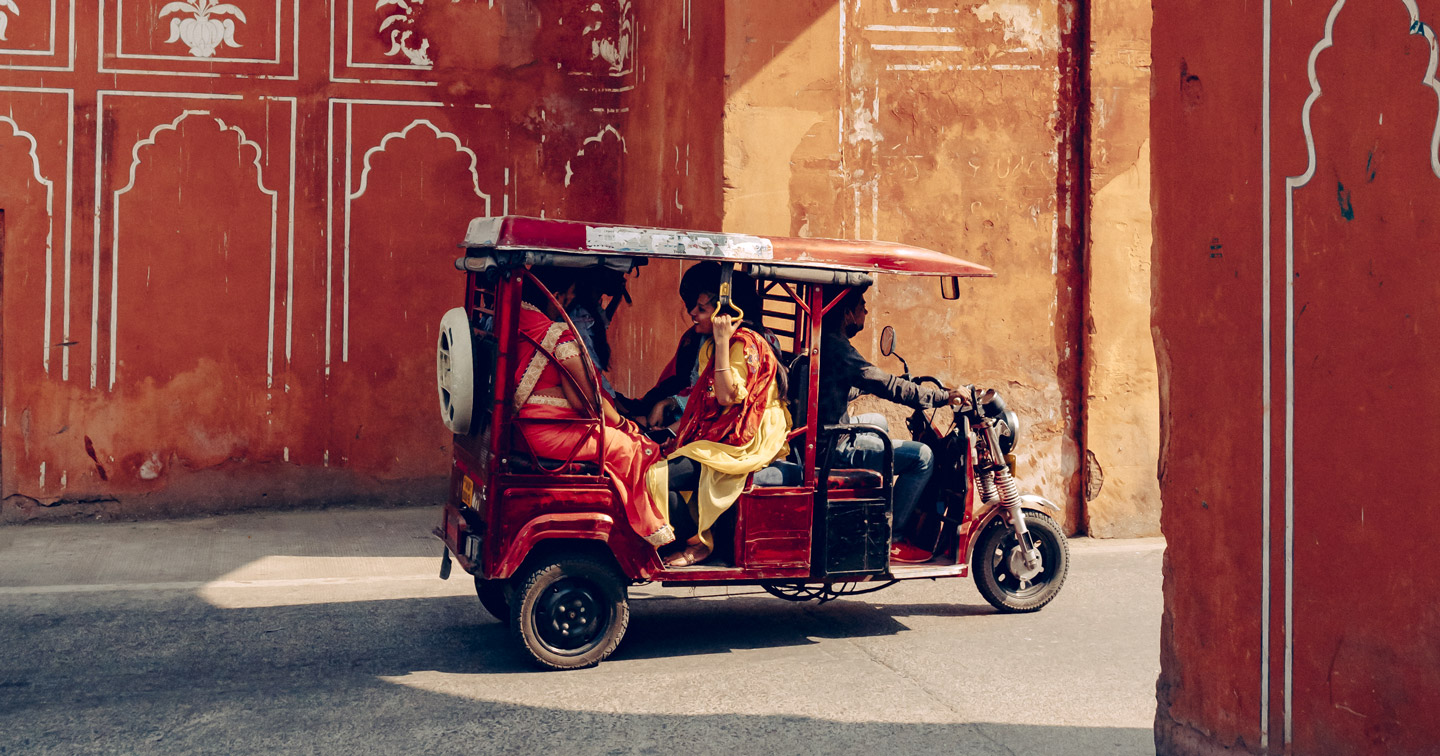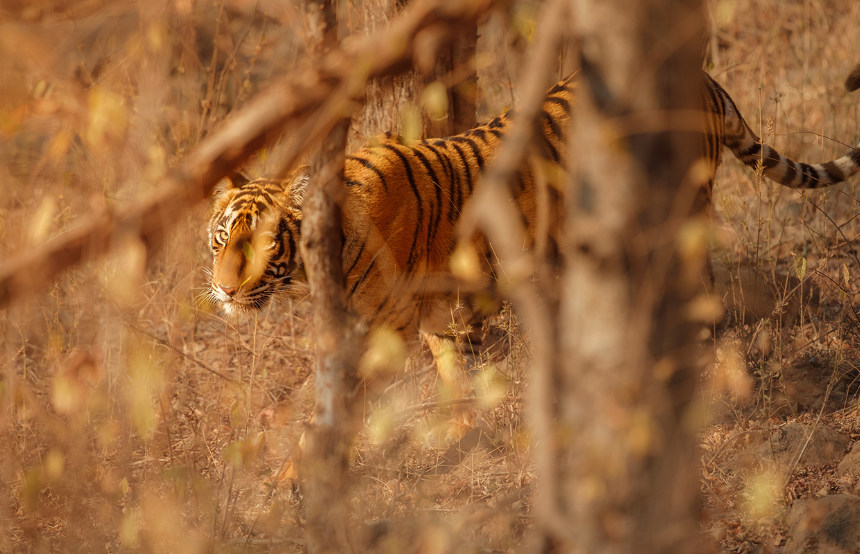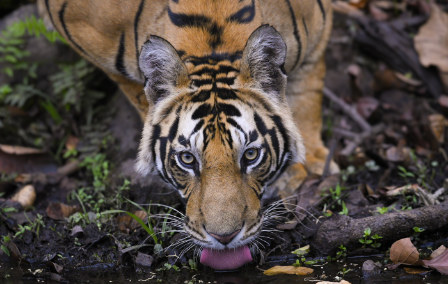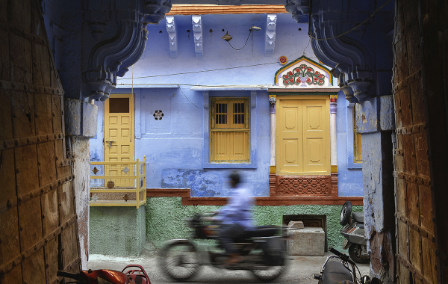Published 19th Apr. 2023
Reading time
If you’re itching to whip out your camera and try out your best David Attenborough voice-over, a holiday to India should be top of your travel list. This huge country is one of 17 megadiverse countries in the world (countries that have extreme biodiversity) and as such, the wildlife in India is simply spectacular. Read on to learn about just some of the amazing creatures that call this country home.
India’s national animal is the crème de la crème of wildlife in India. The majestic Bengal tiger is one of the biggest wild cats alive today, able to grow to almost ten feet from nose to tail tip and boasting the longest canine teeth of any living cat. Most can be found prowling through India’s national parks, though some live in neighbouring countries such as Bangladesh, Nepal, Myanmar and Bhutan. The relatively small Bandhavgarh National Park in Madhya Pradesh has India’s highest concentration of tigers per area, currently home to around 60 to 70 of the predators. Ranthambore National Park in Rajasthan is probably the most well-known tiger spotting location in India, where you can weave through green and golden plains in search of tigers along with other animals such as leopards, hyena and deer. If you’ve set your heart on seeing a tiger, avoid visiting India between October and December when the lush post-monsoon landscape makes them harder to spot. Even if you don’t manage to see one of these incredible animals, you might well hear one – a Bengal tiger’s ferocious roar can travel over a mile.
India is home to 60% of the world’s Asian elephants, which are smaller than their African relatives. Even so, these sociable creatures are the largest land mammals on the continent (an adult bull can weight over 790 stone) and they spend around two thirds of their day eating (what a life). Their wild populations are concentrated in four groups in south, north, central and north-east India, and there are also many elephant camps and sanctuaries throughout the country. We know it’s tempting to jump at the opportunity to get up close to these lovable animals, but it’s important to be mindful of mistreatment. Many centres chain elephants up, force them to perform and allow tourists to ride them, which requires beating and starving the animals into submission. To make sure you’re only contributing to helping these wonderful animals to thrive, it’s a good idea to research the ethics of any elephant sanctuaries in advance. This might include enquiring about where the animals are found, choosing somewhere where the elephants can move around freely, and making sure the facility restricts breeding where possible. If you need some help choosing a reputable elephant camp or seeing elephants in the wild, don’t hesitate to ask.
What if we told you that India offers numerous opportunities spot one of the world’s most magical mammals: the dolphin. There are two subspecies of river dolphin in India: the Ganges river dolphin (which is the national aquatic animal of India) and the Indus river dolphin, both of which are the most ancient dolphin species alive. The majority of Indus river dolphins live in Pakistan, and their only habitat in India is the Beas River. As they’re extremely rare, sightings are few and far between. Ganges river dolphins are easier to spot. Although there are only around 3200 left in the wild, the majority of Ganges river dolphins live in India. The Kaziranga National Park and the Dibru Saikhowa National Park (both located in Assam along the River Brahmaputra) are great places to catch a glimpse of these unusual creatures, along with Vikramashila Dolphin Sanctuary in Bihar. If you’re itching to see a different type of dolphin, head to Goa for a chance to see playful ocean dolphins leaping above the waves, or take a tour of Chilika Lake in Odisha to spot adorable Irrawaddy dolphins that resemble baby beluga whales.
Dolphins aren’t the only aquatic creatures worth seeing in India, but they’re certainly a lot more friendly than these cold-blooded carnivores. Mugger crocodiles are India’s most common crocodile, found in Ranthambore National Park along with many lakes, rivers and marshes throughout the country. Also known as marsh crocodiles, these reptiles are powerful swimmers who walk on land during the hot season in search of water sources. They’re smaller and generally less aggressive than saltwater crocodiles, though we still wouldn’t recommend getting too close (mugger crocodiles have the second most powerful bite force of all crocodiles). India is in fact home to three crocodile species, the others being saltwater crocodiles and gharial crocodiles. If you’re a croc enthusiast, head to the Kendrapara District in Odisha, the only place in the country where you can find all three species.
We’re ending this list of wildlife in India how we started: with a big and beautiful cat. Indian leopards are elusive predators that can run at an impressive speed of over 36 miles per hour. These solitary creatures are famously secretive and difficult to track, but if you’re lucky you might spot one resting on a tree branch until it’s time to head out and catch their prey. The best time for leopard safaris is in the hottest and driest months between March and June, when there are fewer plants to obscure your view and wildlife tends to congregate around water sources (bear in mind that the later months can be unbearably hot). Leopards live in many places throughout the country, but the best places to spot them are in reserves and known leopard habitats such as Jim Corbett National Park in Uttarakhand, Jawai Bandh in Rajasthan, and Bhadra Wildlife Sanctuary in Karnataka.

Our eager experts have explored India from its mountainous north to its tropical south in search of the best destinations, experiences and properties. In-country, our passionate team of Concierges share a love of India and are always on hand to impart extensive knowledge of their country. Working with phenomenal local guides across the country, we tailor experiences to your specific interests, from family-friendly block printing in Jaipur to city food tours and off-the-beaten-track wildlife safaris. Whether you’d rather call a historic palace or a humble guesthouse home, we can offer your dream accommodation while in India.
ENQUIRE NOWPractical advice and inspiration for your next trip

Searching for the best safaris in India? We’ve got you covered. Whether you’re keen to track tigers in Madhya Pradesh, admire Asiatic lions in Gujarat or photograph forest eagle owls in Kerala, your India holiday awaits. While Bengal tigers steal the limelight in Bandhavgarh National Park, don’t forget about the shaggy sloth bears (though they’re not as cuddly as they look). Feeling up for the adventure?
15th September 2025 - India Safari & Wildlife

With their sleek, tangerine-tinged coats, piercing eyes and commanding presence, nothing beats the thrill of seeing a tiger in the wild. And where better than in India, home to the largest population on Earth? But when it comes to the best time to see tigers in India, it all depends on what you want from your trip. Whether you’d rather vivid green landscapes or crowd-free safaris, we’ve got the insider intel on when to see India’s famous big cats.
23rd June 2025 - India Safari & Wildlife

India has long been a favourite destination here at Original Travel. It's the kind of country that inspires a lifelong affinity; travellers become hooked on the kaleidoscope of colour, energy and spirituality that pulsates throughout the nation. From India’s remarkable landscapes and diverse cities to its thriving wildlife and creative cuisine, there’s always more to explore. Keen to discover more reasons to visit India?
25th May 2025 - India Travel Inspiration

Our team of destination experts will get to know you and your unique requirements for your holiday

We work with you to build an ultra-personalised holiday itinerary with your choice of accommodation, experiences and activities

All of our holidays include little extras designed to make a big difference to your trip, from fast-tracking you through airport check-in and security to our network of local Concierges